LOWER MAKEFIELD, PA – In a clear a sign that spring is nigh, construction crews are scheduled to begin installing the concrete road deck atop the Scudder Falls Toll Bridge’s upstream span next week, the Delaware River Joint Toll Bridge Commission announced today.
Temperatures are forecast to warm to levels allowing for pouring, finishing, and curing of concrete along the 1,815-foot first span of the new bridge, which remains on track to open to traffic on a yet-to-be-determined date this summer.
The first pour of concrete is expected to begin 2 a.m. Tuesday, March 12, and end during the early afternoon that day. This will necessitate a right-lane closure in the Pennsylvania-bound direction on the current Scudder Falls Bridge. This will result in a single-lane travel pattern on I-295 NB (old I-95 SB), starting just before the bridge in New Jersey and continuing across the bridge into Pennsylvania.
Backups and travel delays in the PA-bound direction are likely. Motorists are urged to allow extra time to reach their destinations on mornings when concrete pouring takes place.
(Next week’s full schedule of PA-bound single-lane travel periods will be announced in the weekly project travel advisory scheduled for release on Friday.)
The installation plan calls for the concrete-delivery trucks to be routed onto the closed PA-bound lane on the existing bridge. Each truck will then pour its load of concrete into a conveyor apparatus that spans the width of the road deck. A corresponding steel-frame roller-paver machine will then level and finish the respective deck panel.
The concrete paving will begin on the bridge’s Pennsylvania side and progress toward New Jersey. The process will involve 13 separate 10-hour-long pouring periods spread over at least four weeks, weather permitting.
Each completed panel will be covered and involve some heating to ensure proper curing. The cured concrete sections are expected to be strength-tested in late-April/early-May.
Approximately 135,000 cubic feet of concrete will be needed to complete the upstream span’s road deck. That works out to around 20 million pounds of concrete, or roughly 10,000 tons.
More than 500 concrete truck loads will be needed to carry out the entire process.
Steel pans and rebar were installed across the entire bridge deck late last year in preparation for the pouring of the concrete deck. This followed the placement of the bridge’s steel support girders earlier in the year. The girders sit atop bearings that allow for expansion and contraction of the bridge deck as temperature rise and ebb annually with the seasons. The bearings rest on piers and abutments that were constructed in late 2017 and the first half of 2018.
The bridge’s upstream span is the first of two, side-by-side bridge structures that will comprise the Scudder Falls Toll Bridge. Each structure will have continuous-span decks, a design that reduces the number of deck joints that can contribute to decay or failure in a bridge structure.
When the new bridge’s first span opens this summer, it will carry I-295 traffic in both directions across the river. Tolls will be collected at highway speeds in the PA-bound direction only through an all-electronic tolling (AET) system consisting of an overhead gantry outfitted with E-ZPass tag readers and high-resolution cameras for Toll-by-Plate invoicing of non-E-ZPass-equipped motorists. Higher tolls will be applied to non-E-ZPass transactions due to the additional costs of looking up vehicle registrations, sending bills and processing payments.
The toll schedule for the Scudder Falls Toll Bridge, which was approved after public hearings in 2016, may be viewed here: http://www.scudderfallsbridge.com/wp-content/uploads/SFB_Toll_Schedule_SFB_singlepage_2.pdf
Once traffic is shifted onto the upstream span this summer, the current 59-year-old Scudder Falls Bridge will be closed and demolished. The new bridge’s second span will then be constructed immediately downstream of the first span. The second span is expected to open to traffic by early 2021. The downstream span will only carry traffic in the NJ-bound direction and the upstream span will be converted to carry PA-direction traffic only. Full project completion is expected to occur later in 2021.
